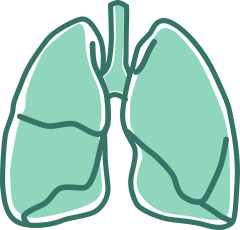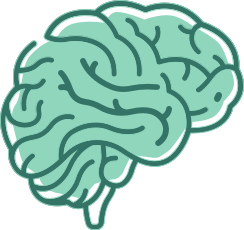DMD Is a Rapidly Progressing, Severely Debilitating, Rare Disease of Muscle Wasting1
Signs and Symptoms1,2

Muscle damage;
inflammation; loss
of muscle strength
and function

Progressive heart
dysfunction,
cardiomyopathy,
heart failure

Weakened
diaphragm leading
to need for assisted
ventilation

Low bone
mineral density

Learning and
cognitive
difficulties
Treatment Recommendations Include Corticosteroids as Part of the Standard of Care in DMD3
- Corticosteroids slow the decline in muscle strength and function in DMD, in part due to effects on inflammation1,3
- Guidelines recommend initiating corticosteroids before substantial physical decline3
Chronic Corticosteroid Use Is Associated With Treatment-Limiting Adverse Effects3,4
Adverse effects are the primary reason (in up to 65% of patients) for discontinuation of corticosteroid treatment5

Worry about side effects was the #1 reason (25%) for not initiating corticosteroid treatment5
Data from the Duchenne Registry including 1627 responses from individuals with DMD aged ≤35 years from the United States.
Potentially Treatment-Limiting Adverse Effects*
- Changes in behavior, growth delay, and decline in bone health are important concerns related to chronic corticosteroid use3,6-9
- Additional treatment-limiting adverse effects may include cushingoid appearance, weight gain, hirsutism, and cataracts4,7
- These are not all the possible adverse effects of corticosteroid treatment
†Based on data from 277 patients (mean age, 10.9 years) treated with corticosteroids from the Cooperative International Neuromuscular Research Group Duchenne Natural History Study (CINRG-DNHS). Patients were considered treated with corticosteroids if they were taking corticosteroids for ≥1 year.6
‡Based on data from 97 patients with DMD aged 10 to <16 years from the Comprehensive Neuromuscular Center (CNC) at Cincinnati Children’s Hospital Medical Center treated with corticosteroids for ≥3 years.7
See why AGAMREE is different and why it might be the right choice for your patients
View clinical trial results for the efficacy and safety of AGAMREE in boys with DMD



